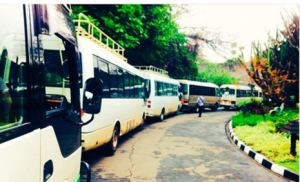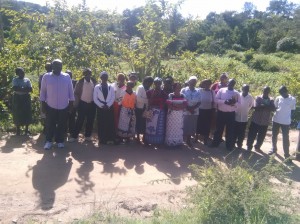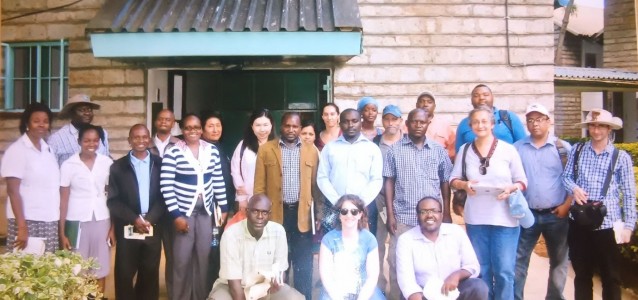In this blog I would like to talk about one of the best conferences I attended this year (2015), the “Ninth International Conference on Community-Based Adaptation” held in Nairobi. More than 400 scientists from around the world (over 90 countries) attended the conference. The theme of the conference was ‘Measuring and enhancing effective adaptation‘. Prior to the start of the conference, over a three day period, 160 scientists from different disciplines participated in a series of field-trips (Figure 1). These field-trips enabled the experts to explore issues associated with community-based adaptation to climate change, particularly with regards to measuring and enhancing effective adaptation. Additionally, the NGOs, counties, ministries …etc who work on the ground on various adaptation projects benefited tremendously from the recommendations and suggestions made by the experts. The conference played an important role in linking scientists and young researchers with the community in the field. I felt this was a very effective approach, recognising the importance of ensuring that the science is not only driven by research curiosity, but rather it should also be driven by urgent societal demands.

Figure 1: 160 scientists from different disciplines participated in a series of field trips over a period of three days.

Figure 2: A photo with the community in the area.
Instead of going into detail about the conference I would like to focus on the first day of the field-trip. On this day we visited a forest conservation project. The aims of this project are the implementation of saving water; protection of the catchment areas through reforestation and conservation management and participatory community management. Below I will share some of the comments made during this fieldtrip:
- There is good collaboration from the community. Although the government and the CFA (Community Forest Association) claimed participation from the beginning with the use of a bottom up approach in planning and implementation, the field visit didn’t reveal community ownership and participation. There is a need for more meetings as the people are scattered in large areas. A monthly or bi-monthly meeting will enhance participation.
- Community level leadership must be developed. We observed that women were not very vocal and the youth were not involved at all. There is no clarity about the roles of the community and the CFA, especially in their rights and roles. For instance, the conflicting relationship between forestation and community traditional grazing rights.
- Linear supply thinking seems to dominate, one of the challenges reported was the lack of funding to irrigate young saplings and trees, although there was a bore well and plenty of water on one individuals private property (the owner is demanding a lot of money). We suggested building community capacities in soil moisture management and maybe an incentive for individuals to conserve specific pockets or regions.
- There must be a thorough understanding of ecologically suitable species for semi arid forest. There are many eucalyptus trees (not suitable for this hard environment) and they are drying up the forest land. We recommended planting native species and multi branch trees.
- Community capacity to make green charcoal and use of fuel efficient stoves (sold by CFA to the community members) will help climate mitigation..
- Livelihood gains from conservation effort should be central to effective climate adaptation; unless this is done the sustainability of the project is not clear.
This project highlights the importance of such successful field visits, ensuring scientists response to growing societal demands through interdisciplinary research and the ability to interactively communicate results to all end users. In my opinion workshops and conferences should allocate time to link the scientists with the community demands.
